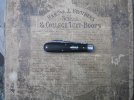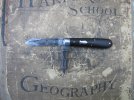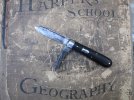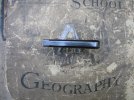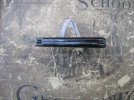- Joined
- Dec 19, 2006
- Messages
- 8,210
Henry Sears & Son 1865, c1878-1959
3 5/8", 3 back spring, half stops on all 3 blades
listed as "Eureka" under the topic "Cattle Knives" in LGIV p287
ad reprint on p170 of Tracy Tudor's The Old Knife Book

3 5/8", 3 back spring, half stops on all 3 blades
listed as "Eureka" under the topic "Cattle Knives" in LGIV p287
ad reprint on p170 of Tracy Tudor's The Old Knife Book


